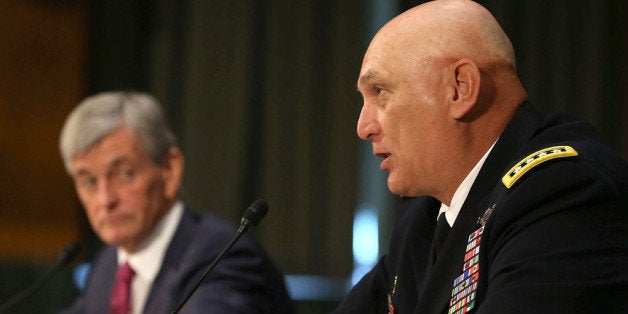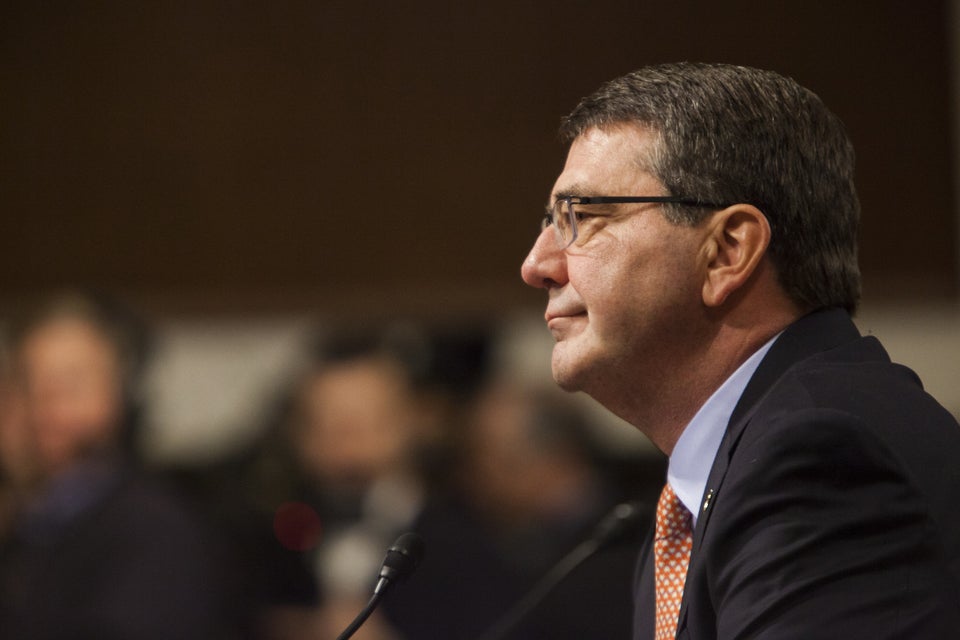
By David Alexander
WASHINGTON, Oct 21 (Reuters) - Two years of budget cuts and fiscal uncertainty have forced the U.S. Army to greatly curtail spending on training, leaving it with only two combat brigades fully prepared to go to war, the Army's top officer said on Monday.
"Right now, we have in the Army two brigades that are trained. That's it. Two," General Ray Odierno told a news conference at the annual conference of the Association of the U.S. Army.
Odierno's comments came as he and Army Secretary John McHugh discussed the impact of the recent U.S. government shutdown as well as across-the-board budget cuts that forced the military to slash spending in March, nearly halfway through its fiscal year.
McHugh and Odierno both appealed to Congress to find a way to give the military more financial predictability so it can plan effectively. McHugh said that with the way the military is currently funded, budgets that are approved today are based on planning that occurred three years earlier.
"You can't run the most important military on the face of the Earth locked into three-year-old budgets," McHugh said.
The Army was hit particularly hard by the cuts in March, known as sequestration, because of higher-than-projected Afghanistan war costs and the need to make up those funds from its operations accounts, which include money for training.
"We had to stop training, basically, in the last six months of the year," Odierno said.
The ongoing uncertainty with the defense budget could make the situation worse in the fiscal year that began in October. The U.S. government began the year with a shutdown that lasted nearly three weeks and put many federal workers on unpaid leave.
The government resumed operations last week under a deal to fund operations at last year's spending levels and priorities.
The Army chief said he hoped to be able to devote enough money to training this fiscal year to ensure that seven combat brigades are fully ready by June to respond to a conflict. He said the current lack of training was his biggest concern.
A combat brigade team has about 3,500 to 5,000 soldiers.
"The worst-case scenario is you ask me to deploy thousands of soldiers somewhere and we have not properly trained them to go because we simply don't have the dollars and money because of the way sequestration is laid out," Odierno said.
Odierno said that while troops going to Afghanistan had been trained, they were "trained now to do training and advising only. They're not trained to do combat operations ... because that's not their mission in Afghanistan any more."
The Army grew to about 570,000 uniformed personnel over the past decade. But with the war in Iraq over and the one in Afghanistan winding down, officials plan to reduce the size of the force to 490,000. The number of brigade combat teams is due to fall from a total of 45 currently down to 33.
With the Pentagon increasingly likely to face cuts of nearly $1 trillion over the next decade, the Army could be forced to cut further. A management review this summer conducted by Defense Secretary Chuck Hagel indicated the Army might have to shrink by up to 70,000 more soldiers, to 420,000.
McHugh said that if the across-the-board cuts continue in force, essentially all of the Army's programs will be affected.
Odierno also said the Army needs a replacement for its armored fighting vehicles, its workhorse Humvee vehicles and its helicopters. "The bottom line is we can't afford all of that. And so we're going to have make some tough decisions," he said. (Reporting by David Alexander; Editing by Will Dunham)

